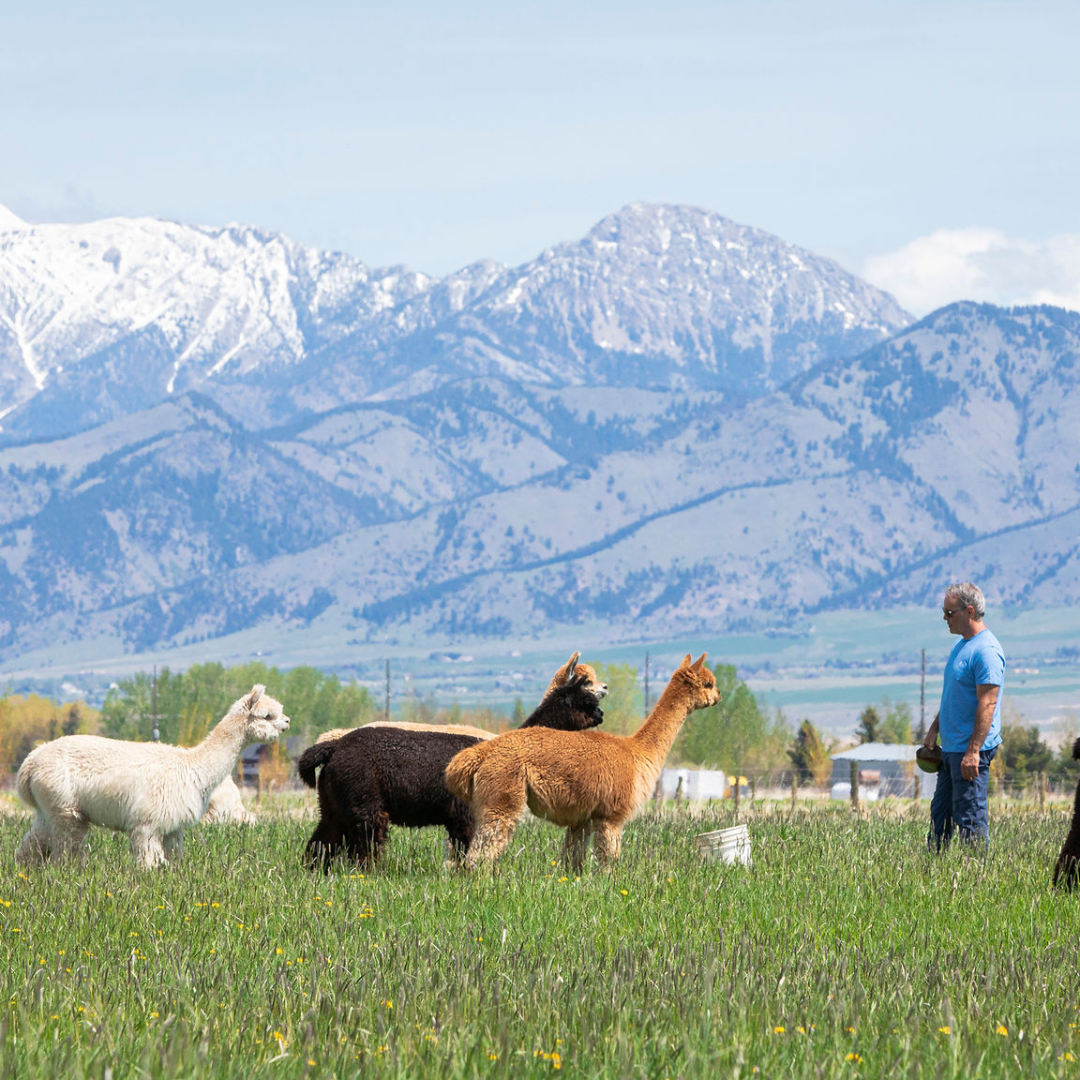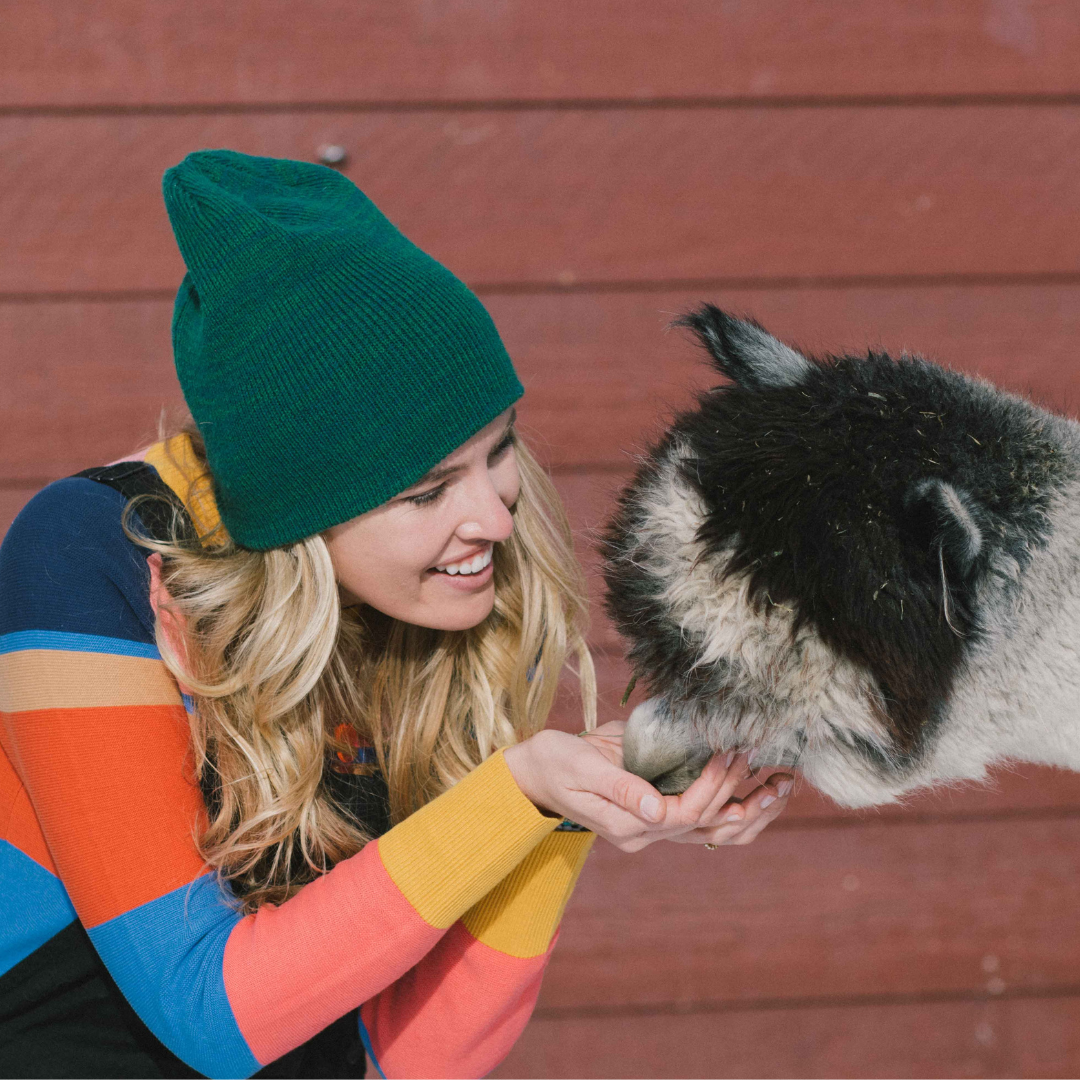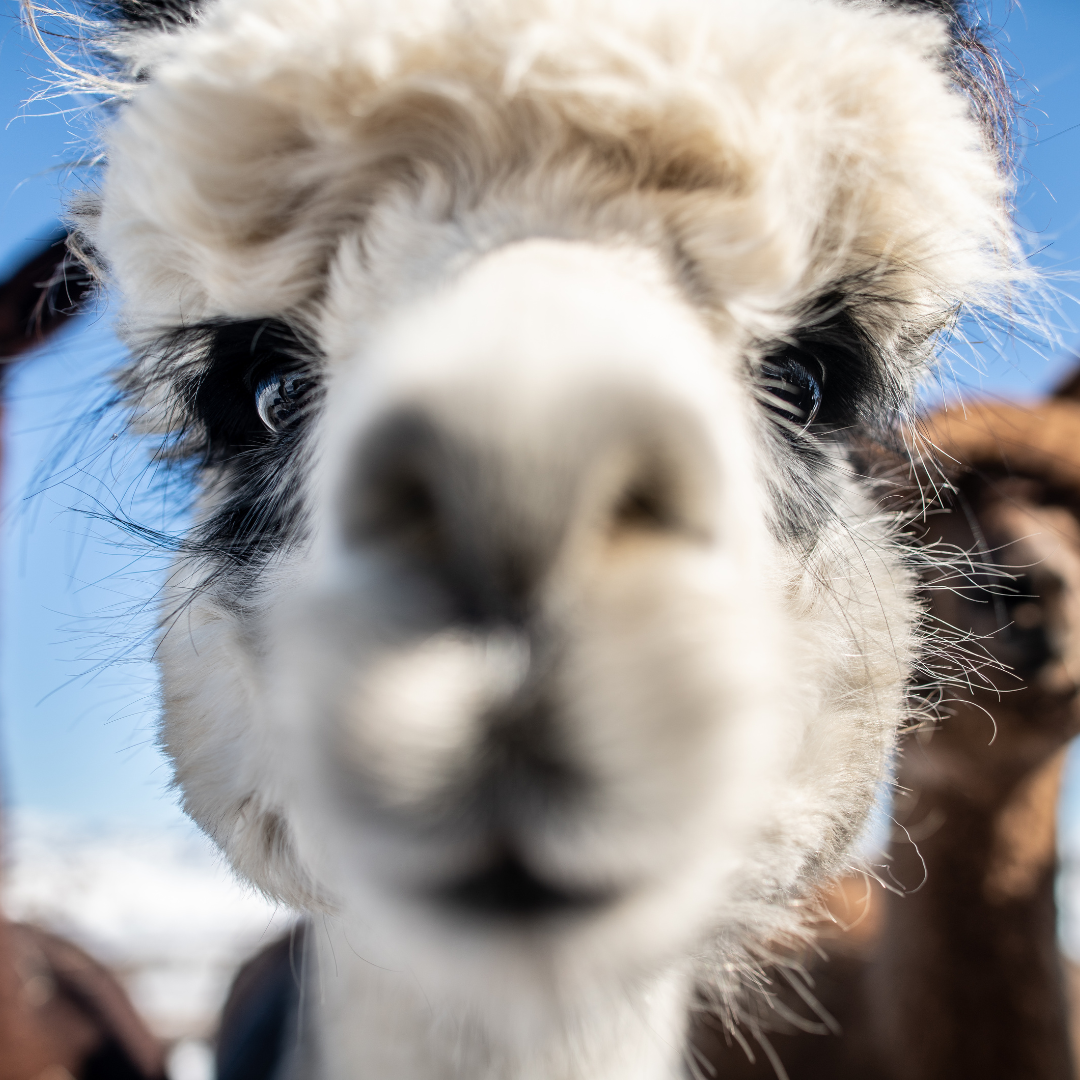Potting soil serves as a reservoir of nutrients for your plants, stabilizes the ground so they do not blow over and keeps the roots moist. Potting soil is the base, the foundation, of your plants. You need to get your plants in the best potting soil possible.
What makes great potting soil?
-
Potting soil used in containers should be light and fluffy.
-
It needs to be light enough to allow water and air to always be present under the soil surface so your plant’s roots have a balanced atmosphere to grow in. Look for the right balance of soil and fertilizer.
-
Fertilizer helps to “starter charge” or slow release your plants with the nutrients they need to grow.
What is in our alpaca potting soil?
Most potting soil you buy in a garden center is comprised of three basic ingredients: fine grade Canadian Sphagnum peat moss soil (74%), alpaca compost (25%) and perlite & vermiculate (1%) to provide air space.
Peat moss provides moisture and nutrient retention. It comes from the peat bogs of the northern United States and Canada; this is usually considered the higher quality type of peat moss. There are some peat bogs in the southern US, but they generally are considered to be slightly lower quality. Peat moss provides a great moisture retaining quality with good air space for healthy growing roots.
Perlite & Vermiculite are both volcanic in origin and both are put into potting mix to provide additional air space and to lighten things up so a potting mix is not too dense and heavy. Neither provides any nutritional benefit. Vermiculite retains moisture and can also hold onto fertilizer for a period of time – helping to keep nutrients around the roots of your plants instead of washing out the bottom of the pot.
Quality ≠ weight
A lot of consumers confuse heavy potting soil with good potting soil. In most cases when a bag of potting soil is very heavy there are two reasons for it; it is either water soaked or it contains a lot of sand. In either case it isn’t a good thing. If a potting soil is soaked it can begin to break down in the bag – losing all its air space, becoming compacted and is at risk for carrying root rot diseases besides being nearly impossible to get into your car. Adding sand to a potting mix is another issue. Unless you are growing cacti, adding sand (which provides anchorage and some air space) is usually not a great idea. In general, sand is added to a potting mix simply because it is a cheap filler. Sand was used instead of more expensive components like peat moss or pine bark. If you live someplace with very high winds, a little sand can help hold plants in place, but in general it is not needed.
What is the difference between garden soil, potting soil, manure products and mulch?
Garden soil is essentially potting soil with a lot of other heavier and cheaper additives like compost, sand, clay and an assortment of other things depending on the manufacturer. It ‘can’ be used as a potting mix, but you run the risk of it being mucky and pulling away from the sides of the pot when it dries out, in general garden soil is for enriching the garden.
Potting soil, also known as potting mix or potting compost, is a medium in which to grow plants, herbs and vegetables in a pot or other durable container. Nutritious potting soil will give your seedlings and houseplants a good place to grow.
Manure products are great for the outside garden since they are rich in nitrogen, but not so good for pots since all that nitrogen tends to burn up your flowers instead of fertilizing them. Using manure based soil amendment directly on the roots of landscape plants or flowers will usually cause all the roots to burn and actually delay the plant getting a good start in your garden. Unless it has been sterilized, the manure can also contain weeds that you will introduce to your own plants. Also most manure related products contain a LOT of sand, which makes them heavier – too dense for good use in containers.
Mulch is usually a raw wood product (bark, wood chunks, shredded wood, etc.) it is meant to be used on the surface of the soil to help keep water from evaporating, so that garden and landscape plants stay moist longer with less water and fewer weeds. Since they are raw wood products, they don’t work well mixed into your flower pots. Raw wood products suck up all the available nitrogen from the soil as they break down and this means your plants look starved and yellow-green because they can’t get enough food to grow. Keep mulch products on top of the soil in your garden and landscape where they are meant to be. They are great for decreasing water loss and if applied thick enough add some protection from annual weeds.
Fertilizer starter charge vs. Slow release fertilizer
More and more you see bagged potting mix with highlighted improvements on the bag. One of the more common ways potting soil is enhanced is with either a starter charge of fertilizer in the mix or slow release fertilizer mixed into the soil. Both are great ideas and help make things easier for you as a gardener, but there are a couple things you should know.
A “starter charge” of fertilizer means there is a minimal amount of fertilizer in the potting mix, but it is minimal and does not mean you don’t ever need to fertilize. It just means you don’t need to fertilize right away. Most starter charges are gone from the potting soil after watering two to three times. A starter charge can help you a little at planting, but you still need to regularly fertilize as well.
A slow release fertilizer, like the alpaca compost fertilizer, means you have more fertilizer incorporated to help your plants transition into their new home lasting several months. This slow release helps to stabilize the plant so the nutrients are available over a long period of time as the plant grows and needs different nutrients.
We guarantee our alpaca potting soil is created from the highest quality product for a large diversity of plants’ growing needs.
Join the alpaca revolution! Alpaca is a sustainable alternative that is not only good for the earth, but for all of us. Alpaca wool is stronger, softer, more eco-friendly, and offers 85% greater wicking capability than merino wool. It is also hypoallergenic! Learn more about the benefits of alpaca in our Alpaca vs. Wool blog posts, shop our collections and follow us on social media!


























































































